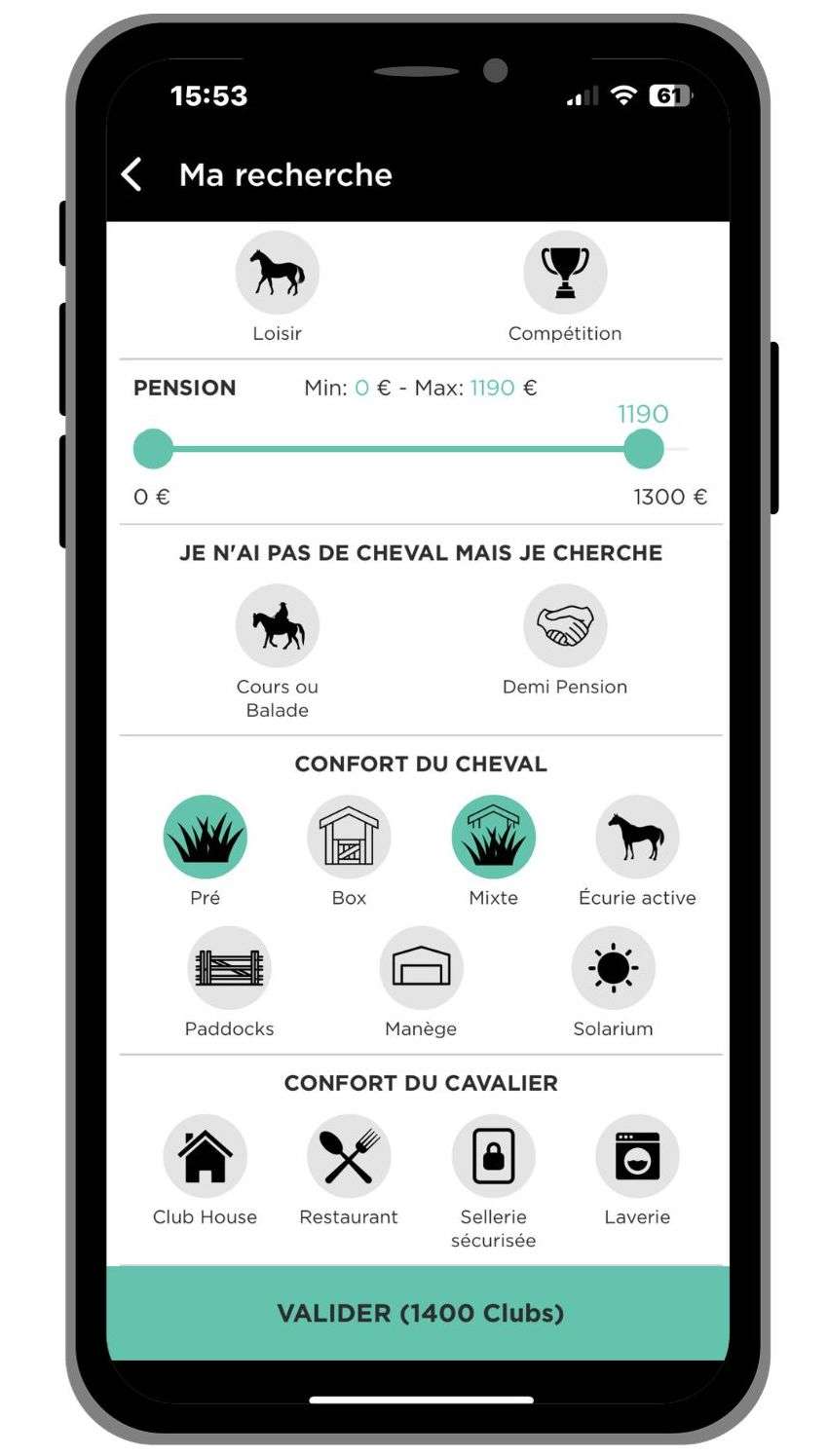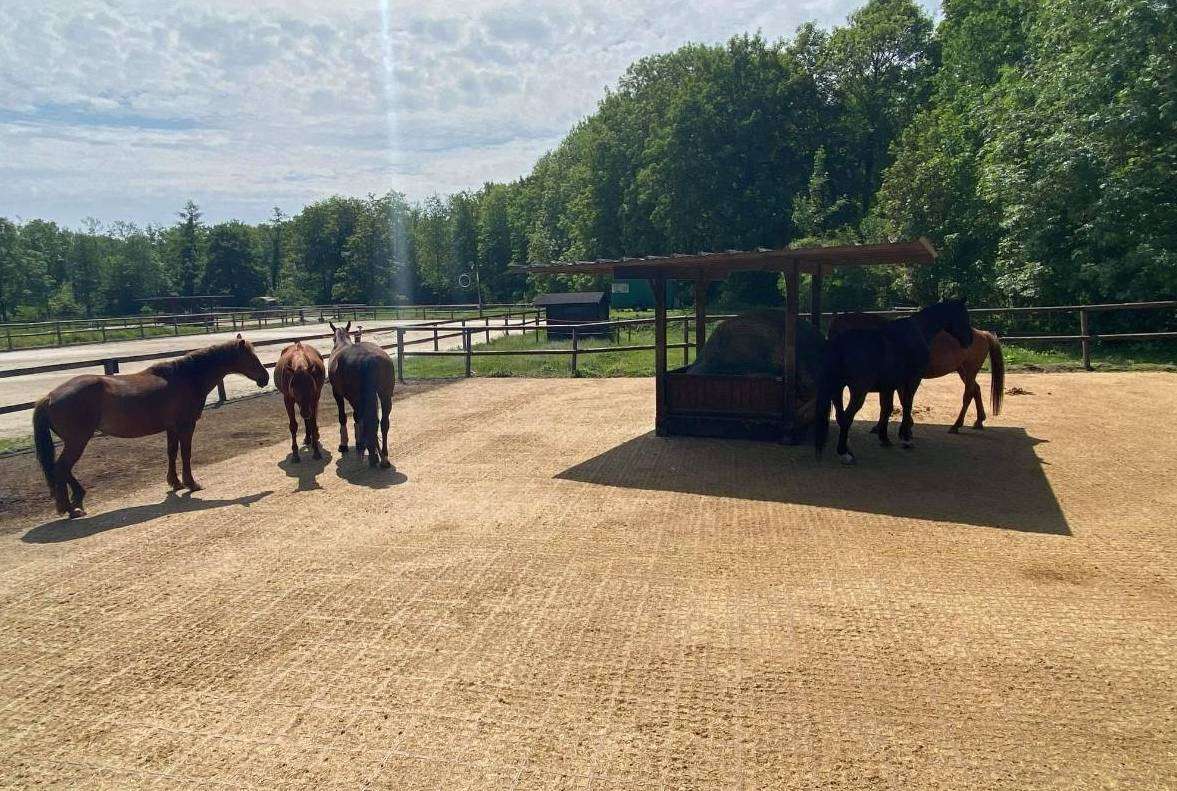As more and more riders question the living conditions of horses, how to (re)think their equestrian facility in favor of equine and human well-being? We found some answers to our questions at the Normandy Horse Meet-Up, held at the International Horse Center in Deauville at the end of September.
Well-being in equestrian facilities: what are we talking about?
Running a stable today also means striving to optimize its structure for happy horses and employees.
Contrary to many preconceived notions, improving the well-being of horses housed in both indoor and outdoor stables is possible without the human becoming a slave to their activity.
How, in practice, can we better consider the horse's well-being on a daily basis? By consistently taking into account the pillars of horse well-being that are now clearly understood:
- Social life – just like us, horses need social interactions.
- Fragmented, fibrous, and high-quality nutrition.
- Daily movement and physical activity.
- Preservation of health, both physical and mental, and safety.
In the Horse Republic app, for instance, the evaluation criteria for equestrian facilities consider these environmental conditions and the preservation of the physical and mental integrity of horses in the questionnaire provided to each user who wants to provide a review.


The changes in accommodation options
More and more stables listed in the app, for instance, are now refusing swan neck collars (which only serve to prevent wood damage), offering daily paddock outings, ensuring proper ventilation and comfortable bedding, and providing adequate daily forage, for example.
Old habits are gradually being abandoned: a sport horse can now live in a herd or in sheltered paddocks without compromising its athletic performance.
Similarly, individual accommodations are becoming more sophisticated, and the range of communal accommodations is expanding.
Individual accommodation includes various types of shelters such as stalls and terrace stalls. These living arrangements allow for personalized feeding; however, this requires more labor. The horse's movement is somewhat limited, so it is essential to provide daily physical activity for the horse.
Horses can live in small groups of 2 or 3 in fields with shelters, for example, with access to stables. They can interact with other horses but do not receive personalized nutrition.
Finally, living in a herd is possible in large communal pastures or equine tracks. These lifestyles allow horses to have constant contact with several other horses but always involve communal feeding.
Active stables have also seen rapid growth in recent years. In this type of facility, the horse can adopt a more natural lifestyle, freely expending energy by moving within a herd.
Active stables, available year-round, offer numerous benefits for horses. Within these facilities, various spaces are designed to meet the different needs of the horses, including rest and feeding areas.
Regardless of the type of accommodation chosen, it's important to always observe and adapt to the individual needs of each horse.


More autonomy for horses and fewer constraints for humans
In active stables, for example, horses can feed themselves whenever they wish by heading to an Automatic Concentrate Distributor (ACD). This dispenser recognizes the horse when it approaches, thanks to a chip in a bracelet or collar. Nutrition is personalized and tailored to each horse's needs and can be divided for multiple daily feedings.
These facilities, designed for the horse's comfort, also provide more convenience for the human caretakers of the horses.
Indeed, due to automated feeding and the constant movement of horses, human labor is reduced by 60 to 70%, according to Fanny Pierrard at Eco-Ecurie, which designs these active stable formats. This reduction in labor would mean a significant time-saving, allowing for more time spent with the horses and an improvement in the quality of the relationship.
The cost of such equipment remains a subject to consider. In most cases, veterinary expenses may decrease due to regular activity and a balanced diet for the horse.
While it is observed at Horse Republic that stables without pasture are now being abandoned by horse owners, it is also estimated that, in the near future, boarding fees may evolve based on these new criteria.


And what about human well-being in all of this?
If we refer to the notion of employee well-being as defined by "the state of satisfaction, comfort, and security experienced by an employee in their professional environment," the well-being of the professionals responsible for equestrian facilities is at stake.
While caring for the horses is undoubtedly the top priority, the comfort of those working in equestrian facilities should not be forgotten. Their well-being is conditioned by four imperatives:
- Reducing labor, which means time savings and less fatigue.
- Customer satisfaction.
- Enjoying quality time with the horses and still finding pleasure in their work.
- Ensuring the profitability of the facility to maintain peace of mind.
For the human element, as in any paid occupation, it is essential to feel mentally and physically well, aiming to prevent "work" from becoming synonymous with torment or sacrifice.
Amandine Cros, the leader of DDE (Développement Durable Équestre), explains, for example, that three considerations should be made by managers and employees to find meaning and fulfillment in their equestrian business:
- Knowing what makes sense for oneself to determine what needs improvement.
- Identifying the means to implement changes, perhaps with guidance.
- Establishing an action plan to make a difference and share one's values.
"I believe that professionals and future professionals need to be more aware of their own needs," says Amandine.
Engaging in a structured approach, such as that offered by the Equures label, a label in the equestrian sector recognized by the Ministry of Agriculture, also helps improve awareness and identify concrete action plans.


